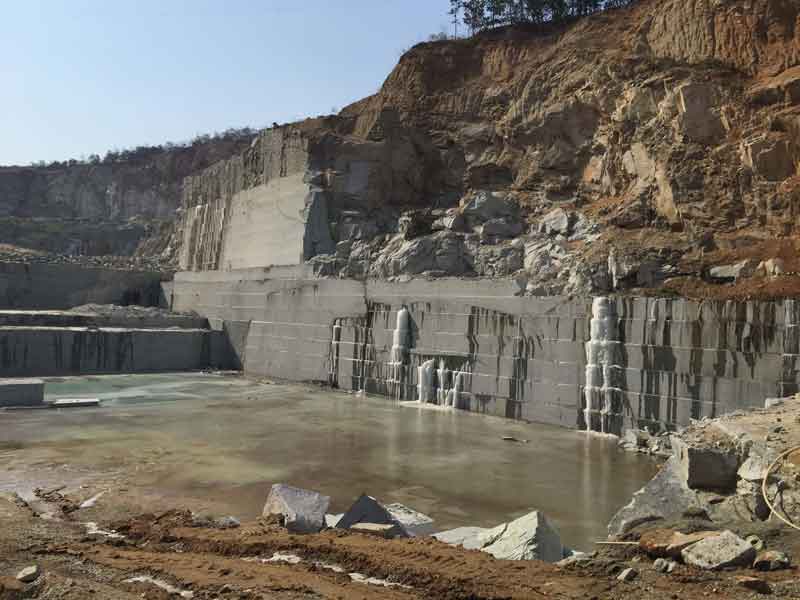Discovering Granite Quarries in South Africa: A Comprehensive Guide
Discovering Granite Quarries in South Africa: A Comprehensive Guide
Blog Article
Unveiling the Mysteries of Granite Quarrying: Where Stamina and Style Meet
The globe of granite quarrying is a world where the raw toughness of nature assembles with human artistry to produce structures that stand the test of time with an air of sophistication. From the midsts of quarries to the careful sprucing up in workshops, the process of changing granite right into building wonders is a complex dancing of practice and innovation. As we peer right into the depths of this ancient craft, we start to uncover the surprise ins and outs that shape the extremely essence of our built environment.
The Origins of Granite Quarrying
In the record of building background, the beginnings of granite quarrying are shrouded in a tapestry of ancient workmanship and geological wonders. Going back to ancient Egypt and Mesopotamia, the extraction of granite from quarries marked the start of a trip that would eventually cause the creation of several of the world's most legendary frameworks.
Granite quarrying's origins can be traced to the skilled artisans who identified the rock's longevity and aesthetic charm. Via a combination of primitive tools and sheer determination, these early quarry workers uncovered granite blocks that would come to be the structure blocks of civilizations.
As civilizations advanced, so did the methods of quarrying granite. The Romans, renowned for their design prowess, established innovative methods for extracting granite to create monoliths, holy places, and roads that stood the test of time.
The tradition of these old quarrying methods proceeds to form modern-day architecture, with granite continuing to be a sign of stamina and beauty in building and construction projects around the world. (granite quarries in south africa)
Devices of the Quarrying Trade
The development of granite quarrying methods from ancient human beings to contemporary times highlights the essential function played by the tools of the quarrying profession in shaping the market's practices. In ancient times, quarrying devices were primary, commonly containing blades, hammers, and wedges made from products like bronze or iron. These devices required substantial manpower and time to remove granite blocks from quarries.

In addition, the introduction of pneumatic tools and high-powered machinery has actually significantly reduced the physical labor required in quarrying operations, boosting worker safety and productivity. As the quarrying market continues to innovate, the tools of the trade remain at the leading edge of driving progression and shaping the future of granite extraction.
Extracting Blocks of Granite
Making use of accuracy equipment and advanced methods, the extraction of granite obstructs from quarries has actually come to be a sophisticated procedure in the modern quarrying sector. The first step involves recognizing the area and size of the granite deposit to determine one of the most effective extraction approach. As soon as an ideal website is chosen, the extraction procedure begins with the exploration of openings for the positioning of nitroglycerins. Regulated blasting strategies are after that used to disintegrate the granite right into convenient areas.

Polishing and Completing Strategies
To attain a perfect surface on granite blocks, skilled artisans use a series of thorough polishing and completing techniques. After the preliminary removal and forming processes, Our site the granite obstructs go through a comprehensive sprucing up stage to improve their all-natural beauty and longevity. One common method used in brightening granite is ruby abrasion, where commercial diamonds are used to grind and polish the stone to a smooth surface. This procedure not only creates a lustrous surface but also makes sure harmony in shade and appearance across the granite block.
In addition to polishing, completing strategies are put on more refine the granite's appearance. These methods may include flaming, refining, or cleaning, each offering one-of-a-kind textures look what i found and finishes to suit different visual choices. Flaming, for example, entails revealing the granite surface to high temperature levels to create a rough, textured finish, ideal for outside applications where slip-resistance is vital. Sharpening, on the other hand, gives a matte finish that is smooth to the touch, excellent for indoor kitchen counters and floor covering. By very carefully selecting and using these polishing and finishing methods, craftsmens can transform raw granite obstructs right into beautiful pieces that showcase both stamina and style.

Environmental Effect and Sustainability
With the expanding focus on ecological awareness in the sector, granite quarrying techniques are increasingly scrutinized for their impact on natural resources and long-lasting sustainability. Furthermore, the transportation of granite from quarries to processing facilities produces carbon discharges, additionally adding to ecological deterioration.
To alleviate these influences and make certain sustainability in granite quarrying, sector stakeholders are taking on numerous procedures. Carrying out innovative modern technologies to minimize power usage and water usage, recovering quarried land for ecological remediation, and promoting responsible sourcing techniques are some approaches being used. Moreover, accreditations such as the Forest Stewardship Council (FSC) and the Leadership in Power and Environmental Layout (LEED) assistance consumers identify eco-friendly granite items.
Verdict
Finally, granite quarrying is a process that calls for specialized tools and strategies to extract blocks of granite and brighten them to a high level of surface. While the environmental effect of quarrying can be helpful resources significant, initiatives are being made to improve sustainability methods in the sector. In general, granite quarrying is a fragile balance in between harnessing the stamina and elegance of this natural rock while reducing its influence on the environment.
Report this page